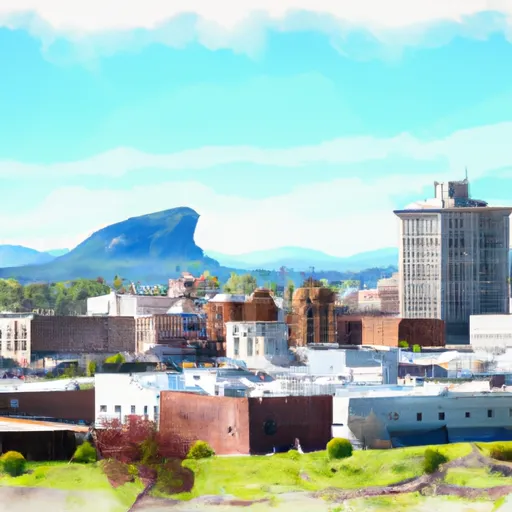-
 Snoflo Premium
Snoflo Premium
Get unlimited access to all our content
With no Ad interruptions! - Start Your Free Trial Login with existing account
Quincy
Eden Index
Climate
6.8
•
Recreation
4.1
•
Community
1.7
•
Safeguard
4.6/10

Quincy, Washington, located in Grant County, offers a unique blend of climate, hydrology constituents, and outdoor recreation opportunities. The region experiences a semi-arid climate, characterized by hot, dry summers and cold winters. This climate is ideal for outdoor activities, with abundant sunshine and minimal rainfall.
The hydrology constituents of Quincy are centered around the Columbia River, which runs nearby. This significant waterway not only provides a scenic backdrop but also offers various water-based activities. Boating, fishing, and swimming are popular pastimes for locals and visitors alike.
Quincy is also surrounded by breathtaking landscapes, including the nearby Columbia Basin and Gorge. Hiking and mountain biking enthusiasts can explore the numerous trails, offering stunning views of the surrounding desert terrain. Moreover, the area boasts several lakes and reservoirs, such as Crescent Bar and Quincy Lake, providing additional opportunities for water recreation.
Notably, Quincy is known for its proximity to the Gorge Amphitheatre, a renowned outdoor concert venue. Visitors can enjoy live music performances against the backdrop of the majestic Columbia River Gorge.
In conclusion, Quincy, Washington, offers a semi-arid climate, diverse hydrology constituents centered around the Columbia River, and a range of outdoor recreation opportunities, making it an attractive destination for nature lovers and adventure enthusiasts.
What is the Eden Index?
The Snoflo Eden Index serves as a comprehensive rating system for regions, evaluating their desirability through a holistic assessment of climate health, outdoor recreation opportunities, and natural disaster risk, acknowledging the profound impact of these factors on livability and well-being.
Climate Health Indicator (CHI): 6.8
Quincy receives approximately
200mm of rain per year,
with humidity levels near 86%
and air temperatures averaging around
11°C.
Quincy has a plant hardyness factor of
6, meaning
plants and agriculture in this region thrive during a short period during spring and early summer. Most
plants will die off during the colder winter months.
By considering the ideal temperature range, reliable water supplies, clean air, and stable seasonal rain or snowpacks, the Climate Health Indicator (CHI) underscores the significance of a healthy climate as the foundation for quality living.
A healthy climate is paramount for ensuring a high quality of life and livability in a region, fostering both physical well-being and environmental harmony. This can be characterized by ideal temperatures, reliable access to water supplies, clean air, and consistent seasonal rain or snowpacks.
Weather Forecast
Streamflow Conditions
Upper Columbia
Area Rivers
Upper Columbia
Snowpack Depths
Upper Columbia
Reservoir Storage Capacity
Upper Columbia
Groundwater Levels
Recreational Opportunity Index (ROI): 4.1
The Recreational Opportunity Index (ROI) recognizes the value of outdoor recreational options, such as parks, hiking trails, camping sites, and fishing spots, while acknowledging that climate plays a pivotal role in ensuring the comfort and consistency of these experiences.
Access to outdoor recreational opportunities, encompassing activities such as parks, hiking, camping, and fishing, is crucial for overall well-being, and the climate plays a pivotal role in enabling and enhancing these experiences, ensuring that individuals can engage in nature-based activities comfortably and consistently.
Camping Areas
| Campground | Campsites | Reservations | Toilets | Showers | Elevation |
|---|---|---|---|---|---|
| Burke Lake Southwest - WDFW | None | 1,200 ft | |||
| Wanapum State Park/Ginkgo Petrified Forest | 50 | 708 ft | |||
| Caliche Lake - WDFW | None | 1,196 ft | |||
| Evergreen East - WDFW | None | 1,209 ft | |||
| Stan Coffin - WDFW | None | 1,176 ft | |||
| Douglas Creek Dispersed - Yakima River Canyon Dispersed | None | 1,530 ft | |||
| Burke Lake West - WDFW | None | 1,190 ft | |||
| Quincey Lake - WDFW | None | 1,188 ft |
Nearby Ski Areas
Catastrophe Safeguard Index (CSI):
The Catastrophe Safeguard Index (CSI) recognizes that natural disaster risk, encompassing floods, fires, hurricanes, and tornadoes, can drastically affect safety and the overall appeal of an area.
The level of natural disaster risk in a region significantly affects safety and the overall livability, with climate change amplifying these risks by potentially increasing the frequency and intensity of events like floods, fires, hurricanes, and tornadoes, thereby posing substantial challenges to community resilience and well-being.
Community Resilience Indicator (CRI): 1.7
The Community Resilience Indicator (CRI) recognizes that education, healthcare, and socioeconomics are crucial to the well-being of a region. The CRI acknowledges the profound impact of these elements on residents' overall quality of life. By evaluating educational resources, healthcare accessibility, and economic inclusivity, the index captures the essential aspects that contribute to a thriving community, fostering resident satisfaction, equity, and social cohesion.

